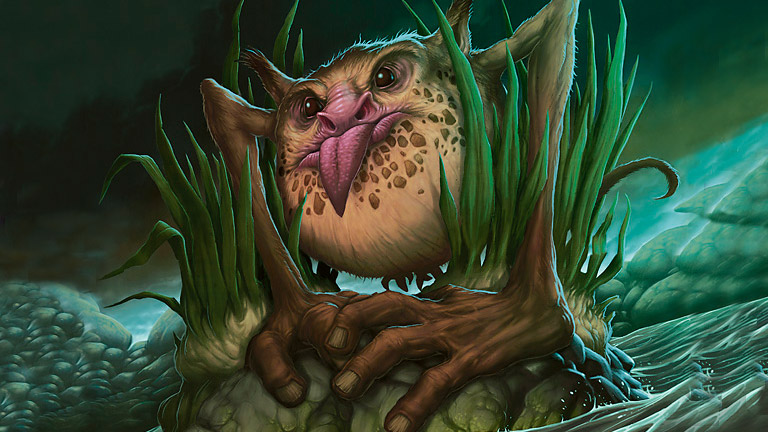Are you a Quiet Speculation member?
If not, now is a perfect time to join up! Our powerful tools, breaking-news analysis, and exclusive Discord channel will make sure you stay up to date and ahead of the curve.
Hi, guys.
This week I'd like to take a deeper look at the changes to Modern card prices that happened over the past month. For this article, I'll be picking a few cards that became expensive all of a sudden and study why they increased in price so that we can do better at our speculations in the future.
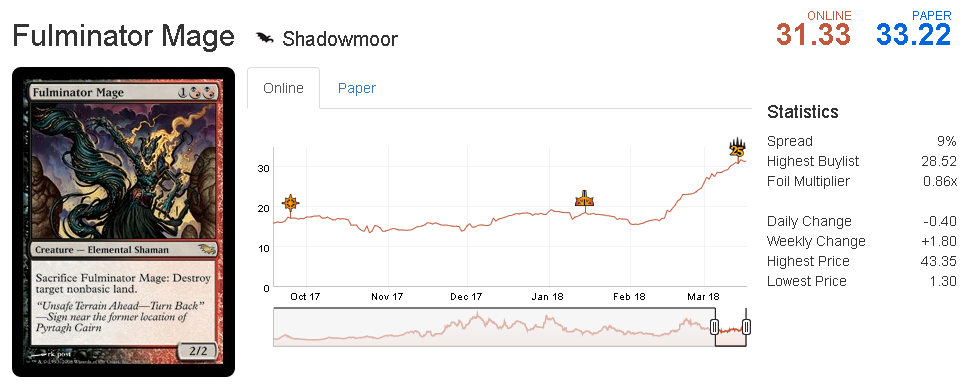
Fulminator Mage was a 15-ticket card one and a half year ago. I remember this because that's when I started playing competitive Modern on MTGO. Back then, Jund Death's Shadow was just about to become the top-tier deck. It held at that price for a while but began to creep up in February, and now sits at double the price.
I mentioned Fulminator a few weeks ago and suggested getting your playset because Jund became so good after the unbanning of Bloodbraid Elf. That looks to be the major cause of this increase.
The main reason Fulminator is expensive is because it's irreplaceable—Stone Rain and Molten Rain do the same thing, but Fulminator Mage has a 2/2 body. Things like this may not seem like a big deal, but for the competitive players it's pretty important. The lesson here is, always invest in cards that are irreplaceable.
![]()
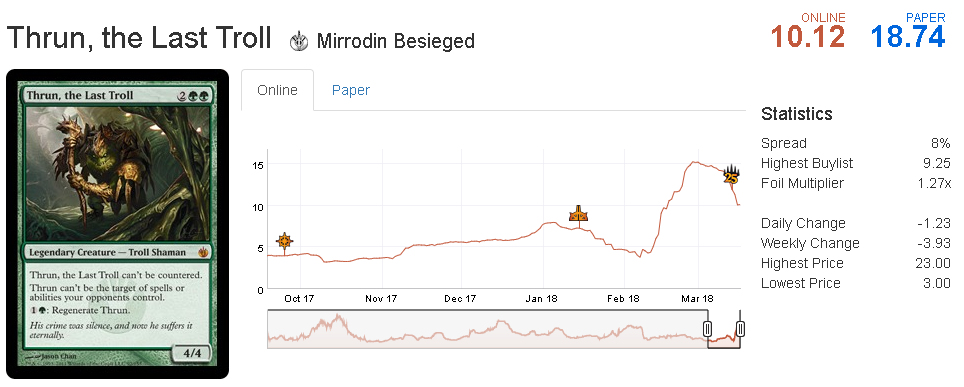
Tireless Tracker and Thrun, the Last Troll are cards used to gain advantage in attrition matchups. The rise of midrange and control decks after the unbannings made these cards become expensive.
Tracker used to be a Standard format staple and the same reason applied last time. Generally, the player with Tracker in play will be favored due to the massive card advantage generated by Clue tokens. Nowadays Tracker is used mostly in Collected Company decks and BGx midrange decks.
On MTGO, straight black-green decks are slowly becoming popular, although Jund seems to be a better deck due to Bloodbraid and all the powerful spells like Kolaghan's Command and Lightning Bolt. These pure BG decks usually play four Dark Confidant and four Tireless Tracker. The good thing about this version of midrange is that it has better mana consistency and creates more card advantage in the long term.
The conclusion is that when a card becomes the key to beat the consensus best decks in the format, they will eventually go up in price due to the increased demand.
As for Thrun, the Last Troll, this card is a silver bullet in midrange matchups, where it's very hard to deal with once it resolves and usually wins the game by itself. Thrun's price increased from 4 tickets to 15 tickets recently, even though it's usually a one-of sideboard card—so you can probably imagine how many players were playing midrange and control decks right after the unbanning. Eventually everyone started playing Thrun in the sideboard, and some even mainboard!
Some other examples of silver bullets are Thundermaw Hellkite and Blood Baron of Vizkopa. Recently Thundermaw also increased by 3 tickets, due to its ability to kill off a resolved Jace, the Mind Sculptor in one shot.
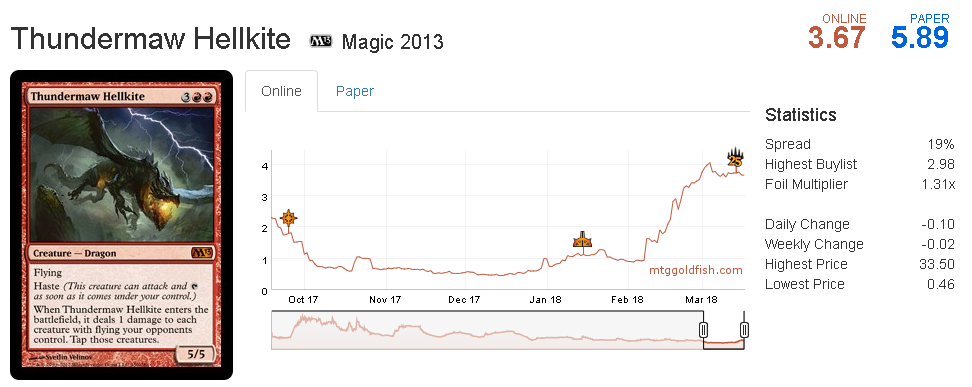
Big Mana Preying on Midrange
Next up, the big mana decks are making a comeback to bring down the midrange decks. Let's have a look at the usual components of big mana decks like Tron and Ramp.
As the strongest deck right now, Jund is good against most of the field, but there are still decks that prey on these fair midrange decks. The ramp decks can put Emrakul, the Promised End or Ulamog, the Ceaseless Hunger into play very quickly, at which point the midrange decks usually lose immediately.
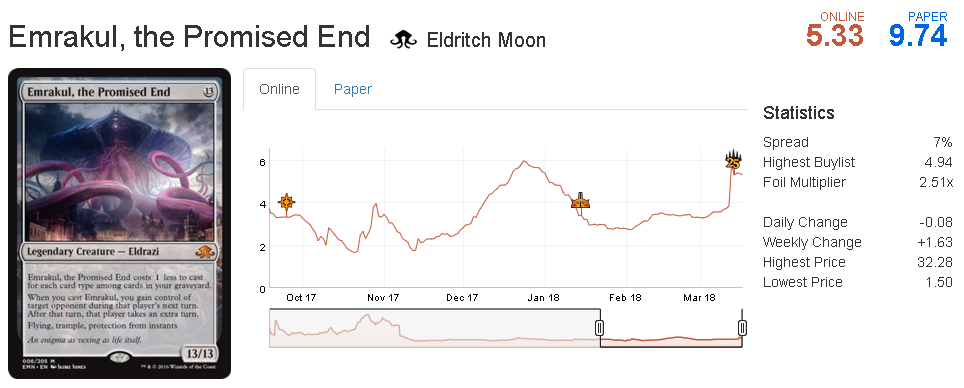
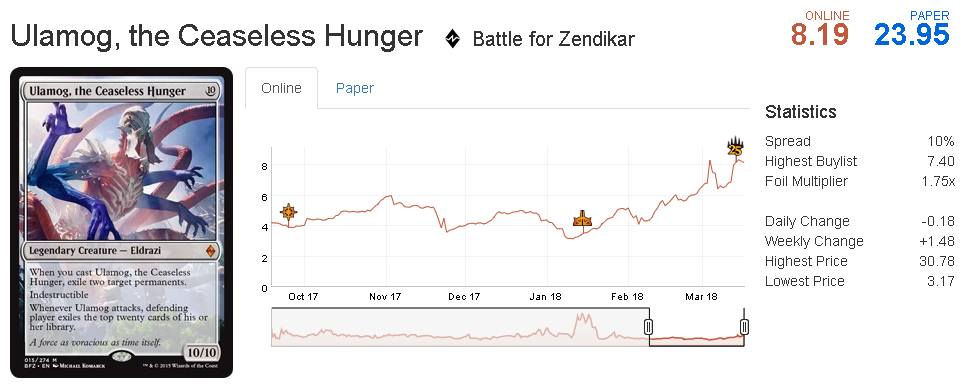
This type of price change is easy to predict if you're actually playing Modern online in a league or two daily. Always think one step further on the next deck that will beat the current best deck—then you will figure out the cards that you should invest on. No deck in the Modern format will always stay at the top of the format. And in the rare cases where that does happen, WotC will do something about it.
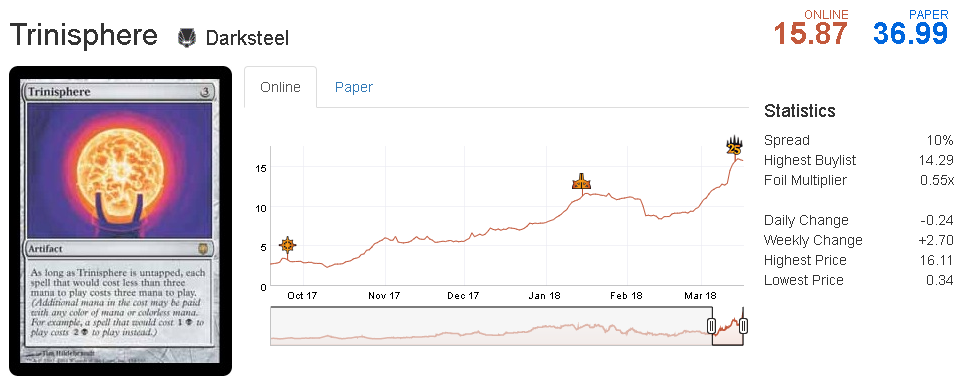
Trinisphere is usually played together with Blood Moon and other land destruction cards to lock the opponent out of the game. This is one way to beat the tier-one decks.
When people can't afford to play expensive cards, they start looking for cheaper ways to win in the format. Playing Modern online you meet a lot of rogue brews, which can be a good source for potential specs. Look for cards that make a big impact on games, but which still have cheap prices—when and if these cards are adopted by more traditional decks, they have the potential for large gains.
Predicting the Next Combo Deck
Another strategy for speculating on Modern centers around combo decks. There are countless combos in Modern that can be good depending on the metagame. If you can predict the next combo deck that will become popular, based on testing results or metagame analysis, you can score big.
I have to say, this is a riskier way to speculate on singles—but if you're really confident in a certain combo deck, you can go ahead and invest on some of the components. The following are some combo deck components that increased in price recently:
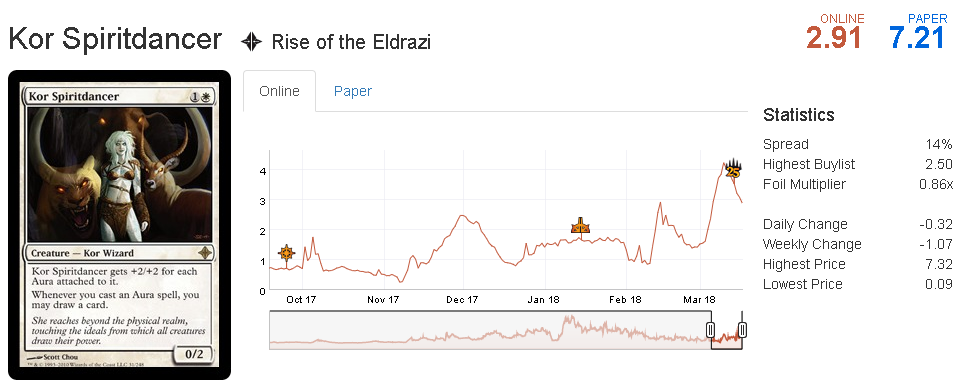
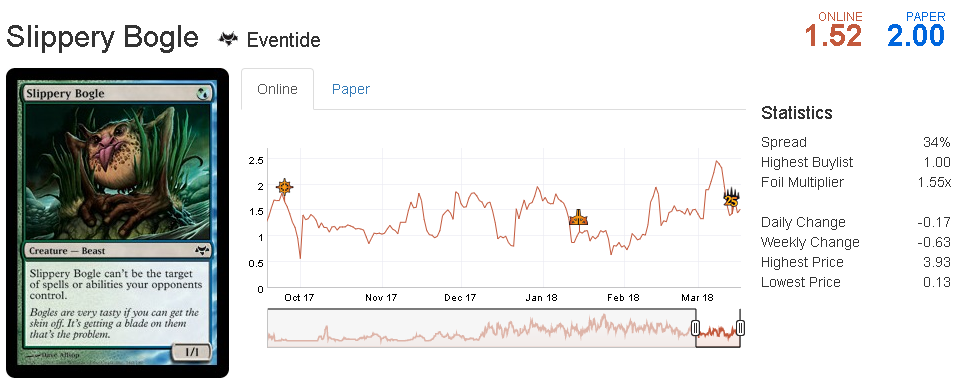
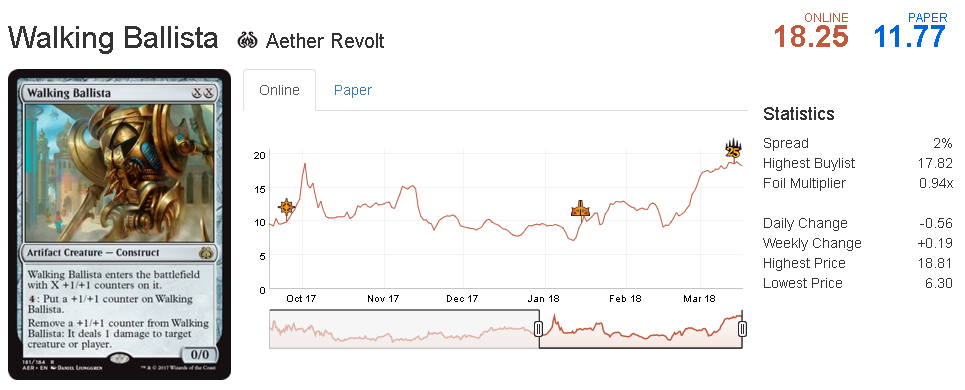
One thing to note about speculation on combo components: they usually fluctuate very fast. This kind of deck can look strong on paper but be weak to specific sideboard cards. Once players get wind of it and react accordingly, the combo may suddenly become unplayable. So, always sell into the hype, especially when a decklist of your selected target has been posted online.
If the price has spiked and the decklist isn't posted yet, then yes, you can still hold them for a while, because not every player has experienced playing against your selected combo yet. But be careful, and be ready to sell quickly.
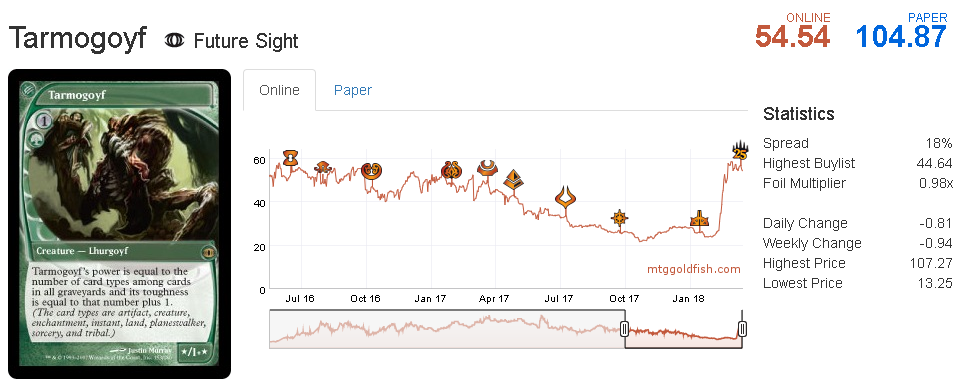
Last but not least, we have Tarmogoyf—the best creature ever printed in MTG. Goyf spiked after the recent unbanning and now it sits at its highest point since July 2016.
I think many MTGO investors caught this pick pretty easily. Basically there's only one thing about Goyf: it will always be the best creature unless WotC decides to print something even stronger to screw up the market of Tarmogoyf. So the conclusion is, as long as nothing crazy happens, Goyfs will eventually come back.
Alright guys, that’s all for this week. Thanks for reading and I’ll see you again next week.
Adrian, signing out.


